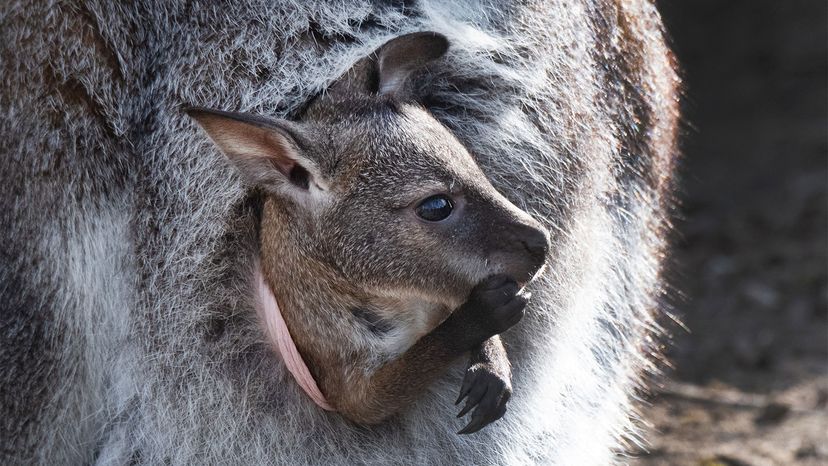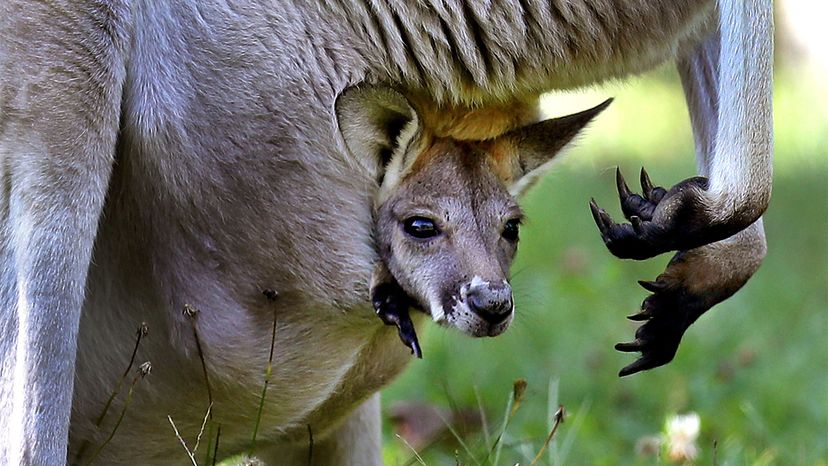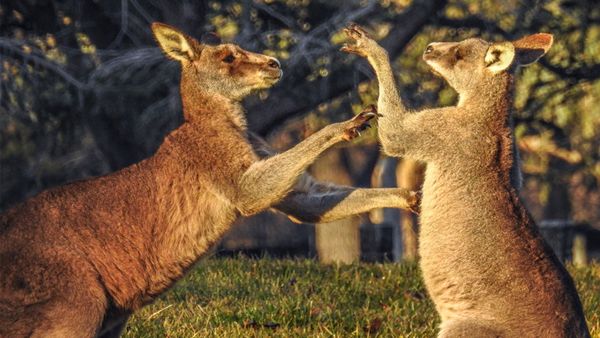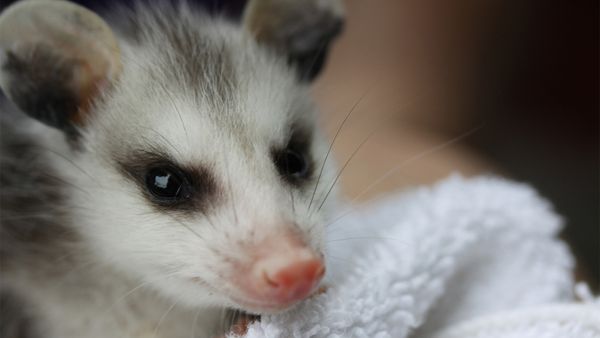
Tummy pouches as child-rearing tools are the bailiwick of all marsupials species — from opossums to koalas to bandicoots. The most famous of the mamas wielding baby holsters, however, is the kangaroo.
Kangaroos are native to Australia and New Guinea; the kangaroo is so archetypally Australian that it graces the country's coat of arms. One of the first things any human toddler with an alphabet board book learns about kangaroos is that the name starts with a "K" and that a small kangaroo head often sticks out of the adult kangaroo's abdomen.
Advertisement
Well, both of those things are true enough, but there is some context to consider. First of all, kangaroos don't have two heads, one at belly button level and one on top of their shoulders; the mother kangaroo sports a big pocket essential to the nursing, protection and ferrying around of her baby, called a joey. Secondly, not all kangaroos have a pouch — just the females, who do 99 percent of the child-rearing. Kangaroos live in large groups called mobs, and the males contribute by acting as bodyguards for the moms and babies.



